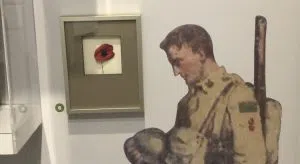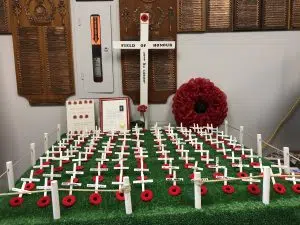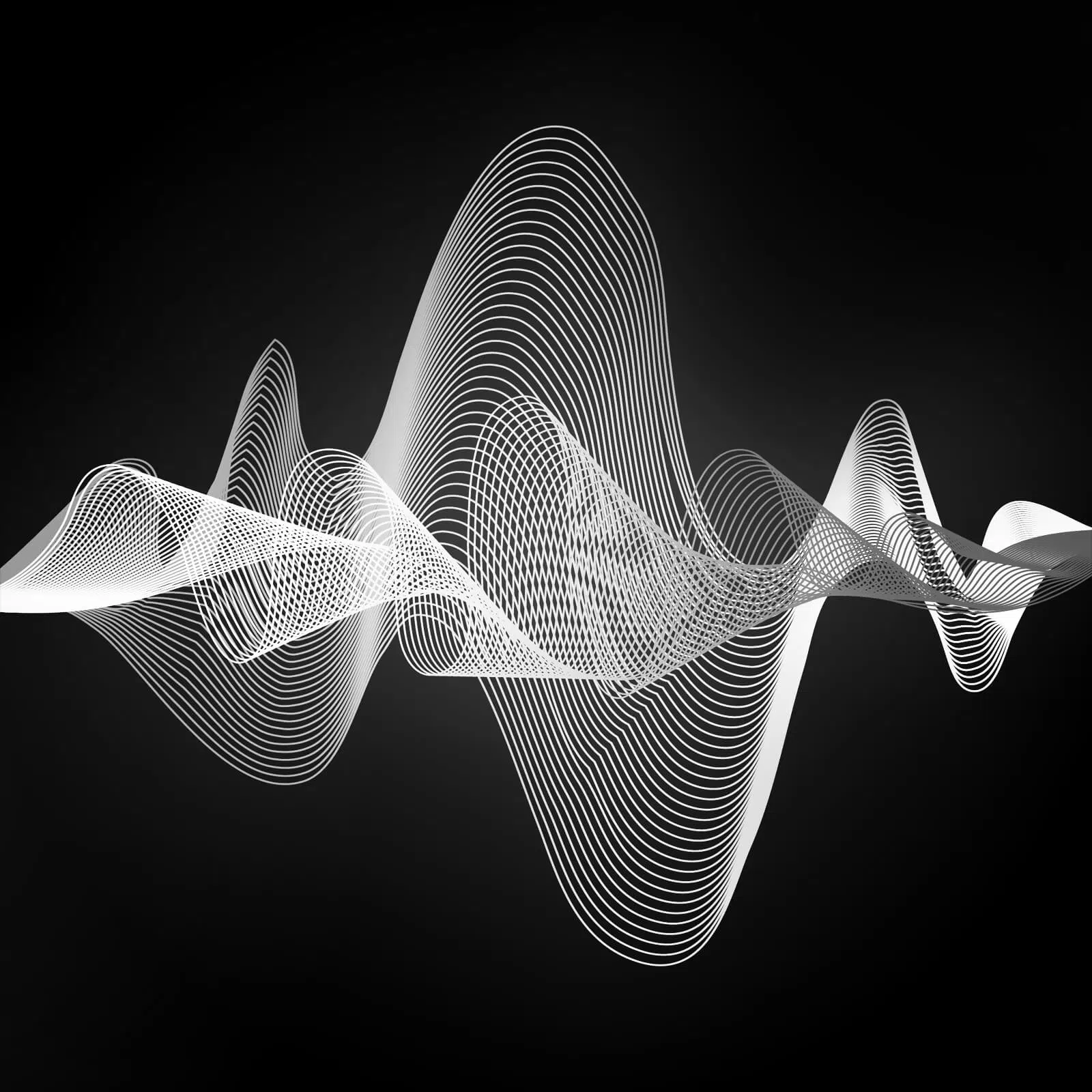
A poppy from one of the first batches made after World War 1, displayed at The Royal Canadian Regiment Museum at Wolseley Barracks London Ontario.
John McCrae’s famous poem ‘In Flanders Fields’ inspired the poppy as the symbol of remembrance after World War 1. It has been 100 years since the end of WW1, and since then people have worn the poppy to remember those who fought for our freedom. The Royal Canadian Regiment in London has a poppy on display that came from around the time when the first batches of poppies were made. Inspired by McCrae’s poem, Lady Haig had the initiative to hire veterans to make the poppies.
“In Scotland, she employed people who were living in the area who just came back from the war. They didn’t have work, and they couldn’t find work anymore, ” said Georgiana Stanciu executive director at The Royal Canadian Regiment Museum in London.
The Royal Legion was interested in what Lady Haig was doing and that is how they got involved.
“They took over the poppies produced by the soldiers, and they spread it around. And to this day the British commonwealth uses the poppies as a symbol of remembrance,” said Stanciu.
The Royal Canadian Legion in London continues to distribute poppies 100 years later. The meaning of the poppy has gone unchanged even though a century has gone by.
“To remember, and say thank you. Thank you to our current veterans, and a remembrance. Especially for us legionaires, we made a promise we will not forget you guys,” said Caspar Koevoets public relations officer at branch #317.
The poppy not only thanks and remembers veterans, but the donations made to receive a poppy go towards helping veterans.
“The assistance that the poppy provides for ex-service personnel is invaluable. It’s just amazing what we can do. We get homeless veterans off the streets and back into society and into apartments. And thats all thanks to the donations we get from the poppy,” said Koevoets.
This November 11th, wear a poppy, take two minutes of silence and remember those who fought, continue to fight, and have given the ultimate sacrifice for our freedom.





